MONUMENTS
Ecclesiastes says, “What does man gain from all his labor at which he toils under the sun? Generations come and generations go, but the earth remains forever.” This exhibit features monuments—tombstones, to labors which have come and gone—yet remain. Factories drove the economy of most of the towns where I grew up. They provided jobs and food for thousands of families. Now they merely sit under the sun, returning to the earth. The activity has ceased and they simply are. These structures which represented function and mass production now sit purposeless. This exhibit is an exploration of three factories, and the communities they served: Borg Warner, Muncie, IN; BPB Celotex, Lagro, IN; and Delco Remy, Anderson, IN. The closing of these factories damaged the communities in which I grew up. I created boxes for each factory. The boxes contain multiple paintings within each. There is a dissonance between the boxes and the factories. The factories were created purely for function and mass production. They produced things that were needed. They provided jobs. They put food on families’ tables. The boxes do nothing. They are painstakingly created one of a kind objects. They could not be further from the original purpose of the factories, yet they are monuments to the factories and the people who passed through. They are tombstones. We create tombstones for a person’s life. The tombstone has no function and says virtually nothing about the person whose life it represents. It doesn’t say if they were good or bad, and it doesn’t say whether they deserved to live or die. They simply make us pause and remember that something once was that now isn’t. They are important.
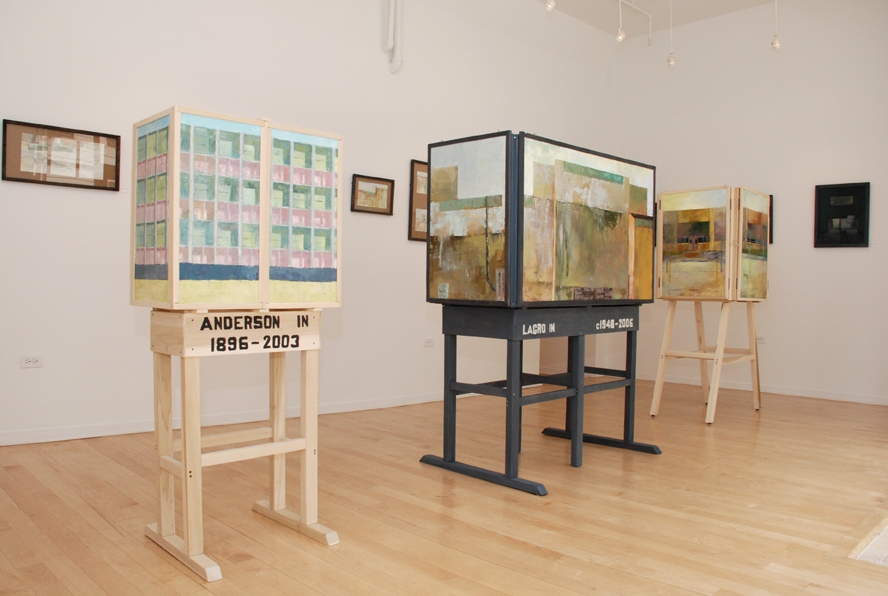
Left to Right: The Delco Remy Monument, the BPB Celotex Monument, the Borg Warner Monument. (photo credit kimberley atwood)
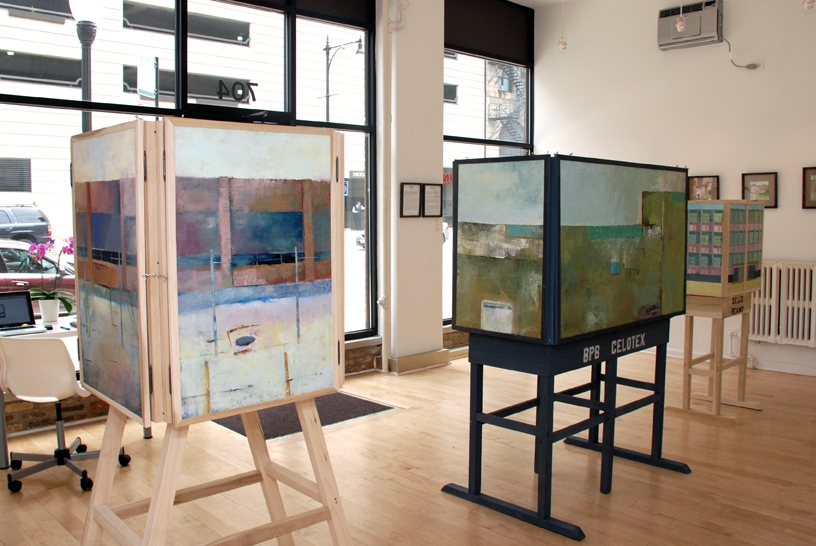
This exhibit consisted of three "Monuments", each structure represented a factory closed in Indiana. The artwork was interactive with paintings built into the structures. Panels could be opened to reveal new paintings inside. (photo credit: Kimberly Atwood).
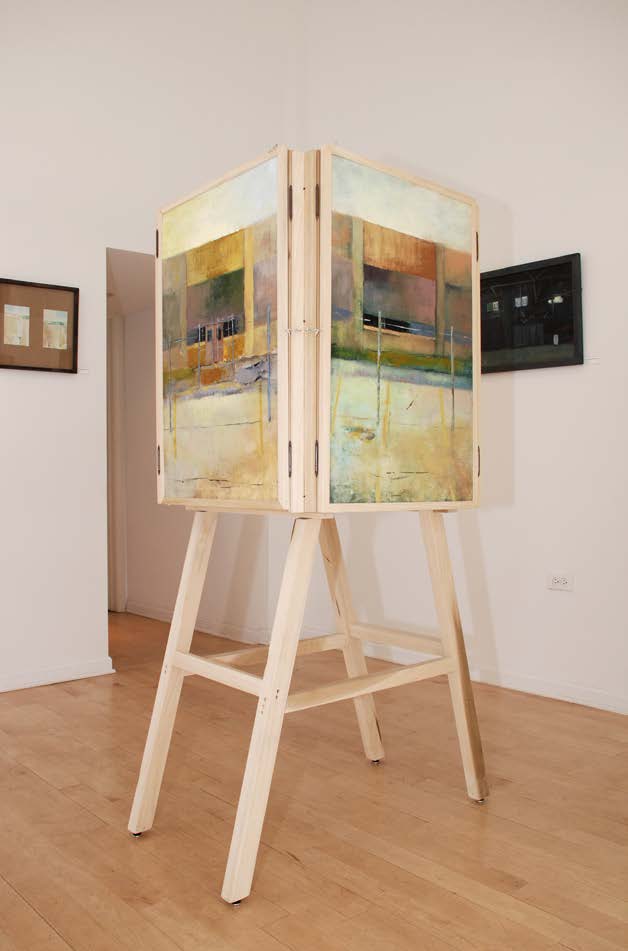
- 4 sided 20 x 30 panels. (photo credit: Kimberly Atwood).
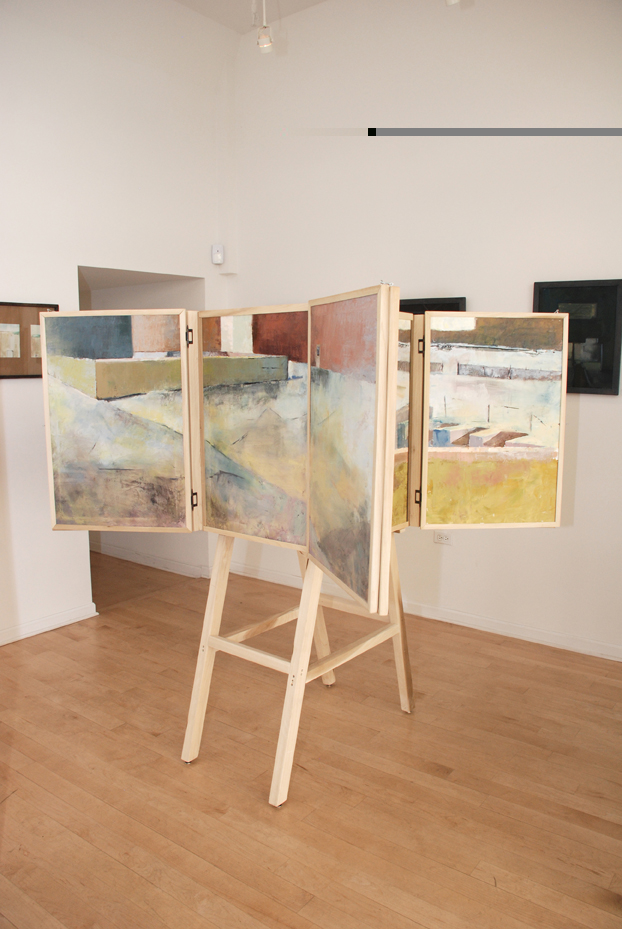
The panels on the Monument open to reveal a triptych. (photo credit: Kimberly Atwood)
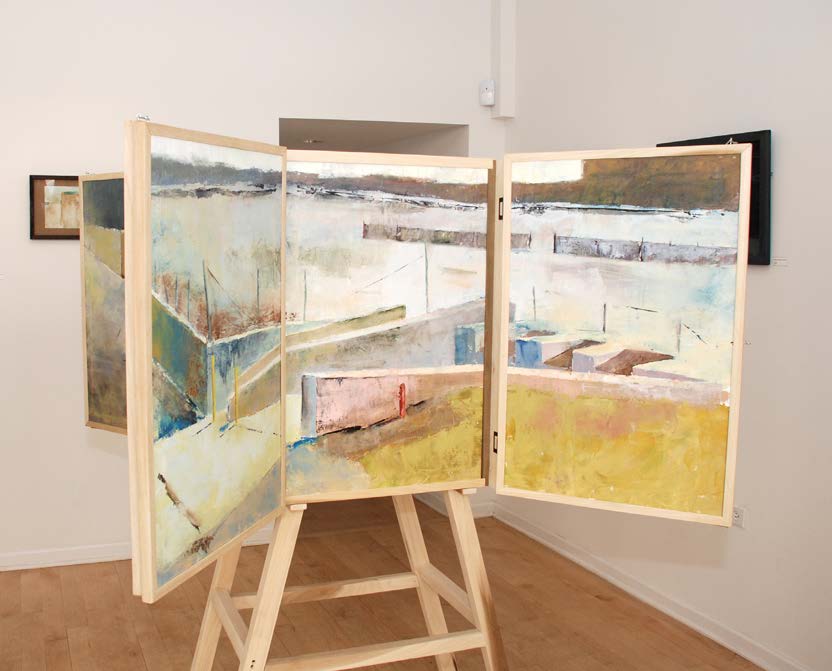
Another triptych Inside the monument (photo credit: Kimberly Atwood)
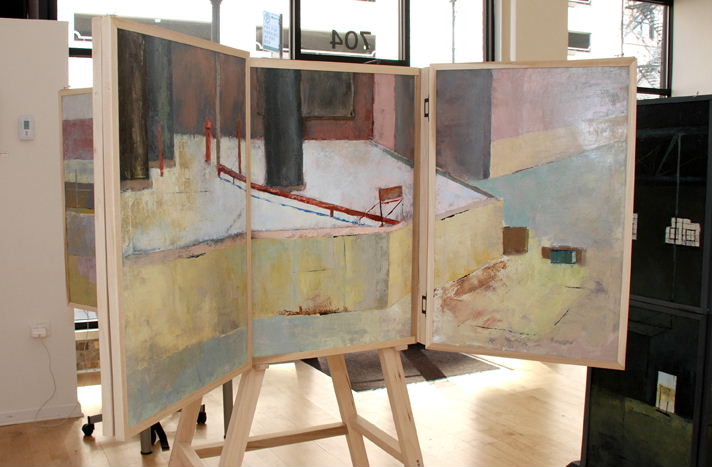
Another triptych Inside the monument (photo credit: Kimberly Atwood)
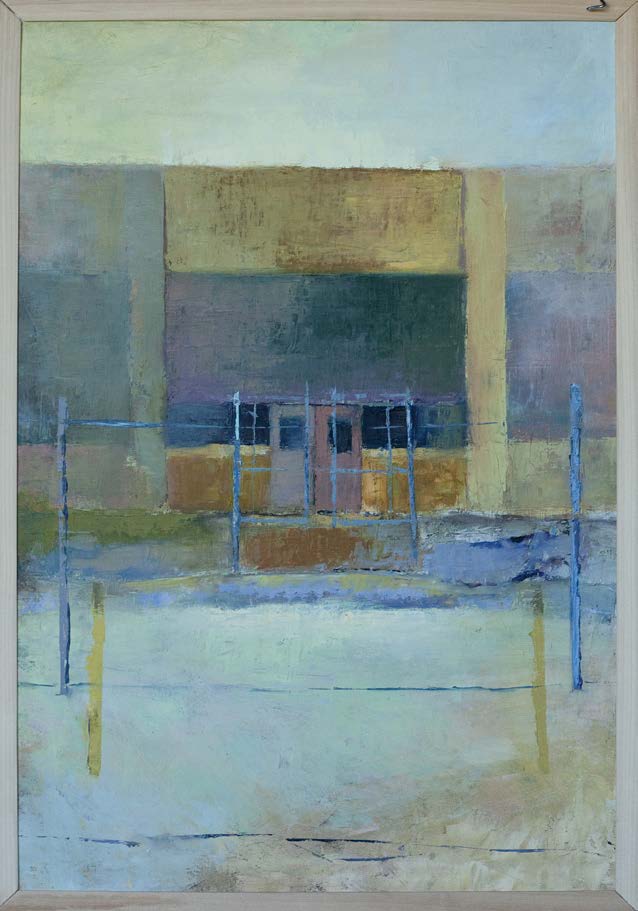
(photo credit: jer nelson)
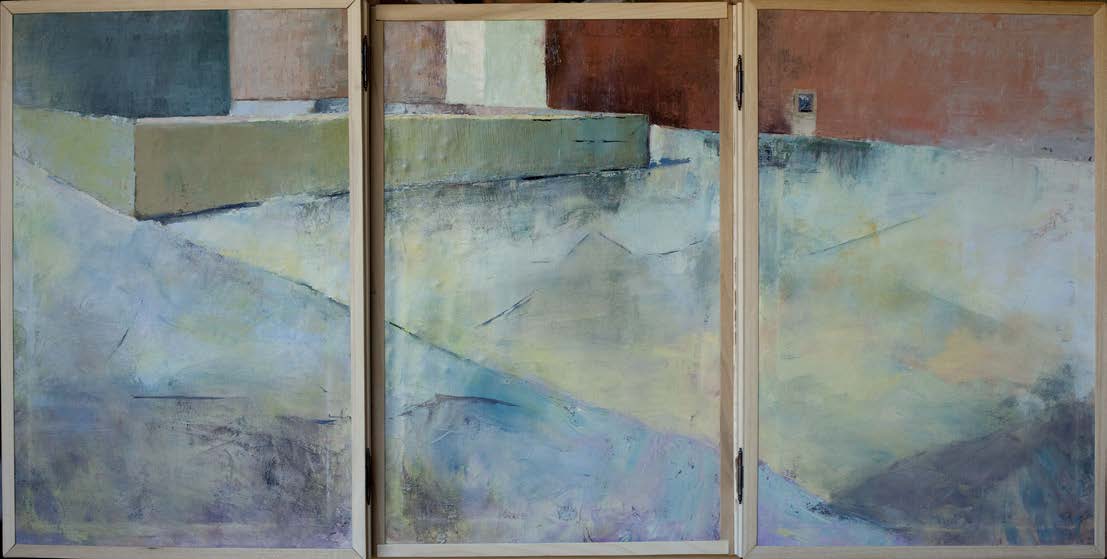
If you open Panel I, hidden inside is Triptych I. (photo credit: jer nelson)
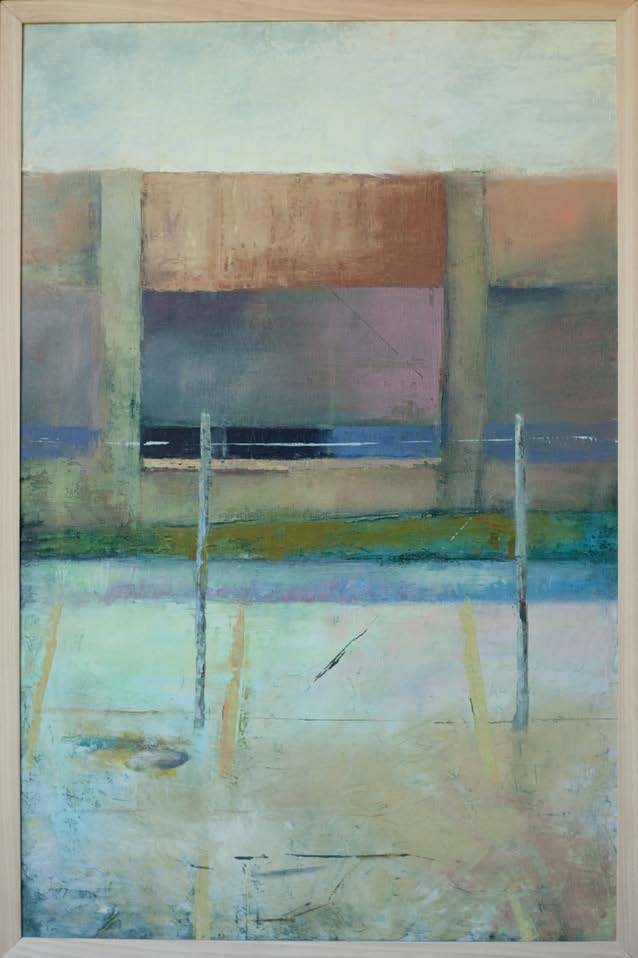
(photo credit: jer nelson)
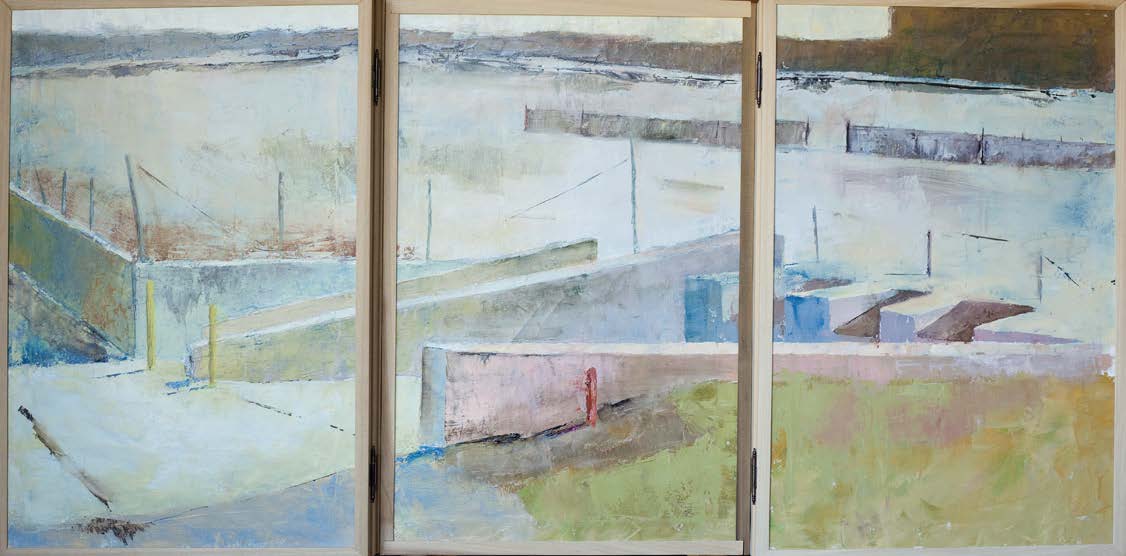
(photo credit: jer nelson)
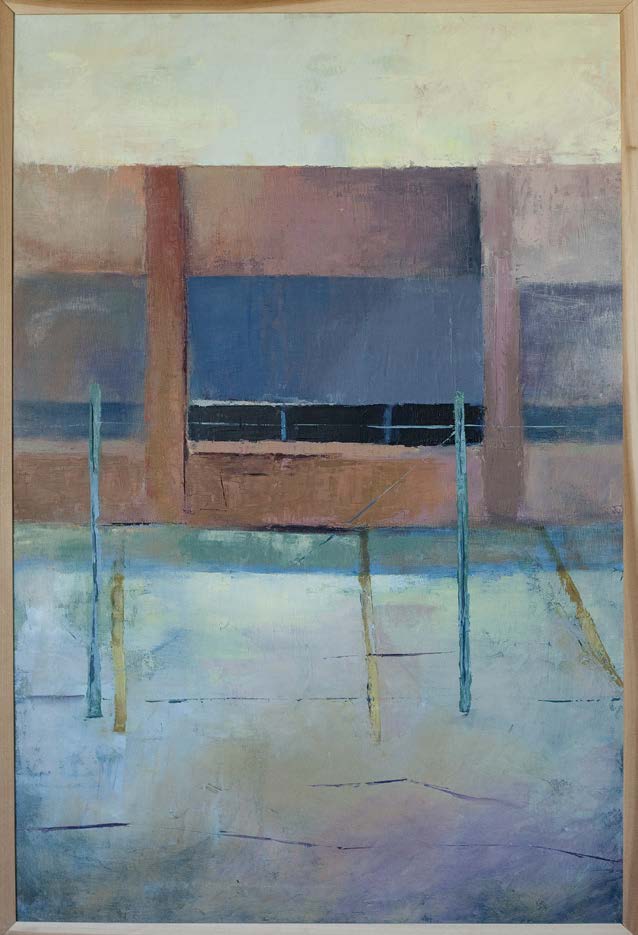
(photo credit: jer nelson)
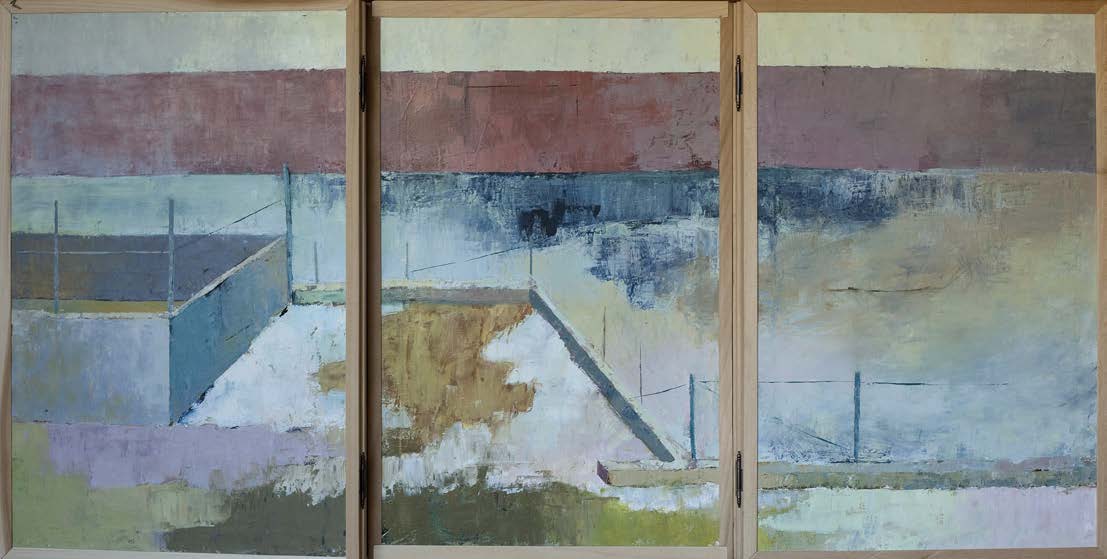
(photo credit: jer nelson)
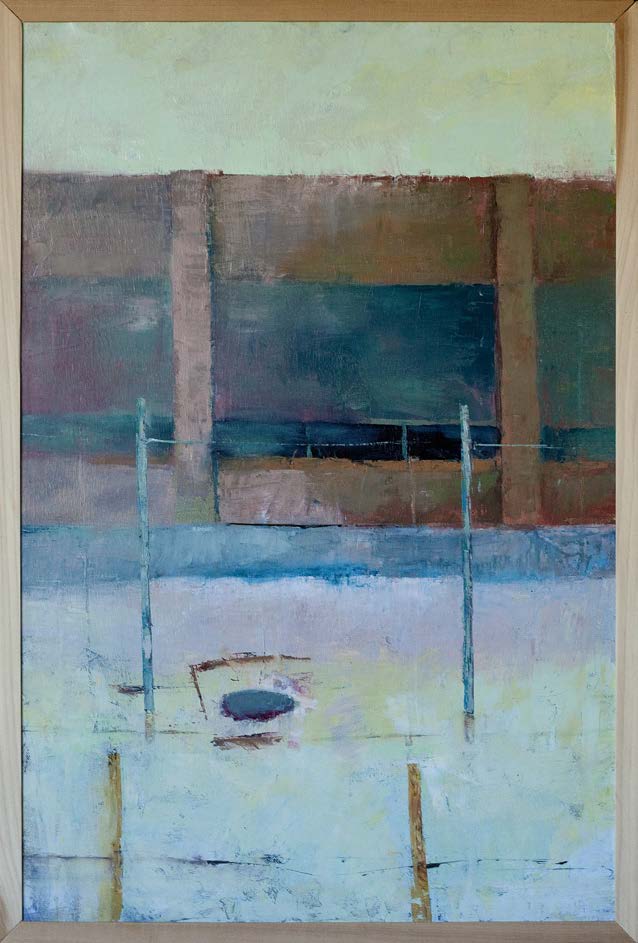
(photo credit: jer nelson)

(photo credit: jer nelson)
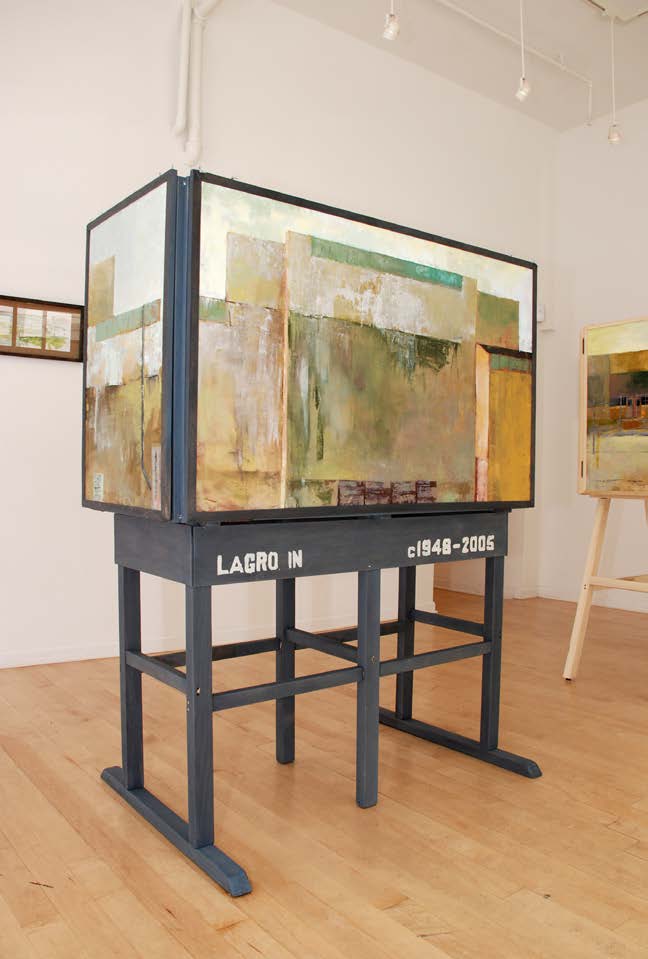
This Monument has four sides, each with a painting of the buildings exterior. The building appeared to be melting, and decomposing into a natural form (photo credit: kimberly atwood)
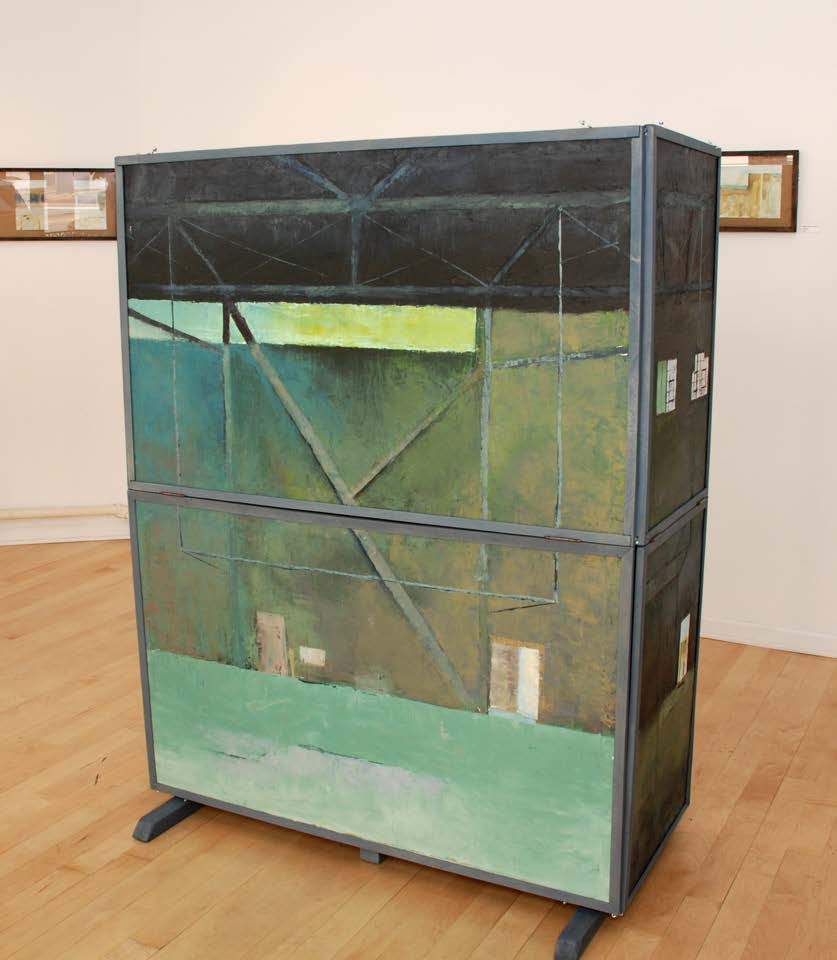
The exterior panels fold down to reveal a four sided diptych of the factories interior (photo credit: kimberly atwood).
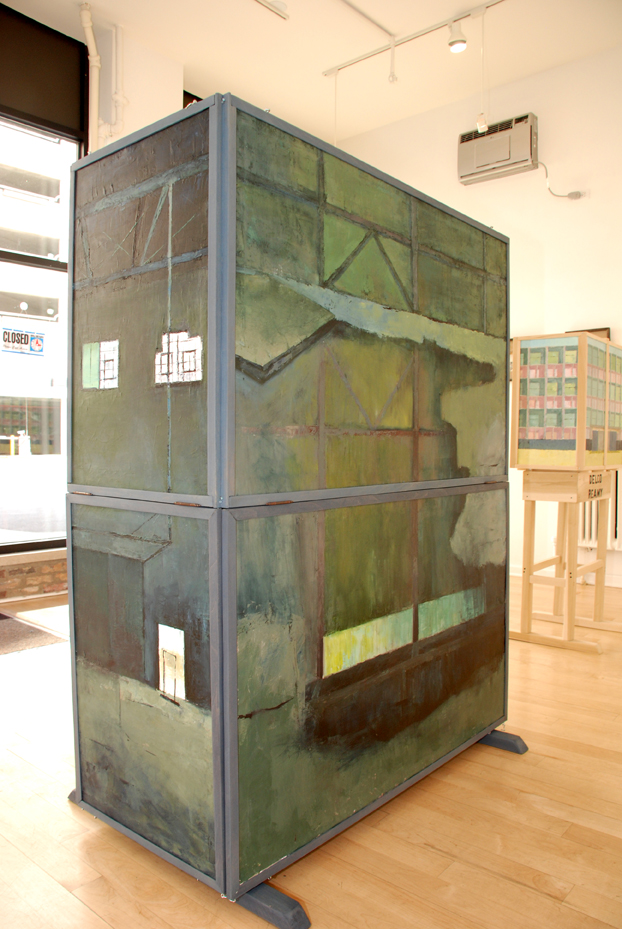
(photo credit kimberly atwood)
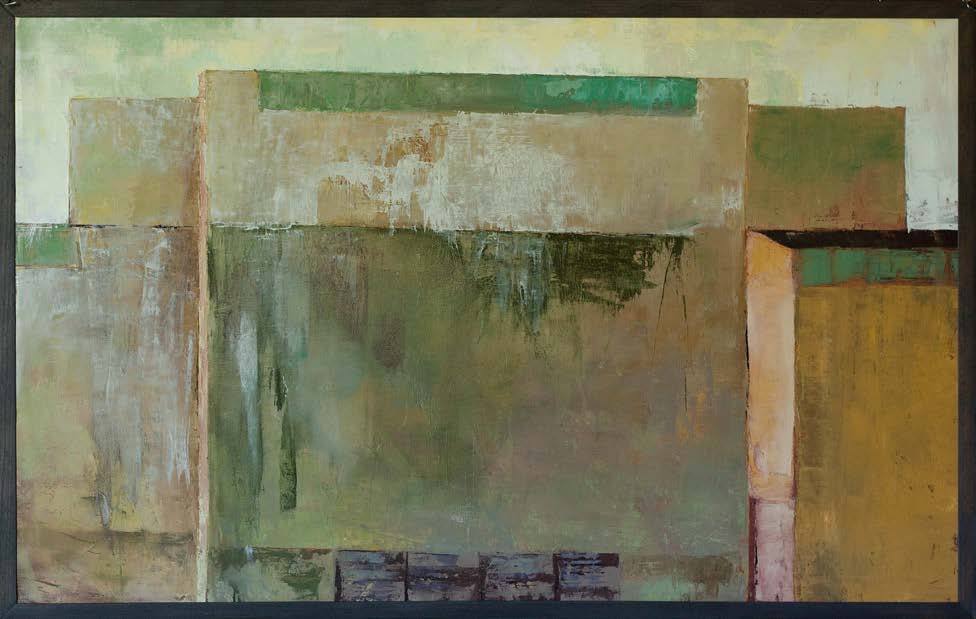
(photo credit: jer nelson)
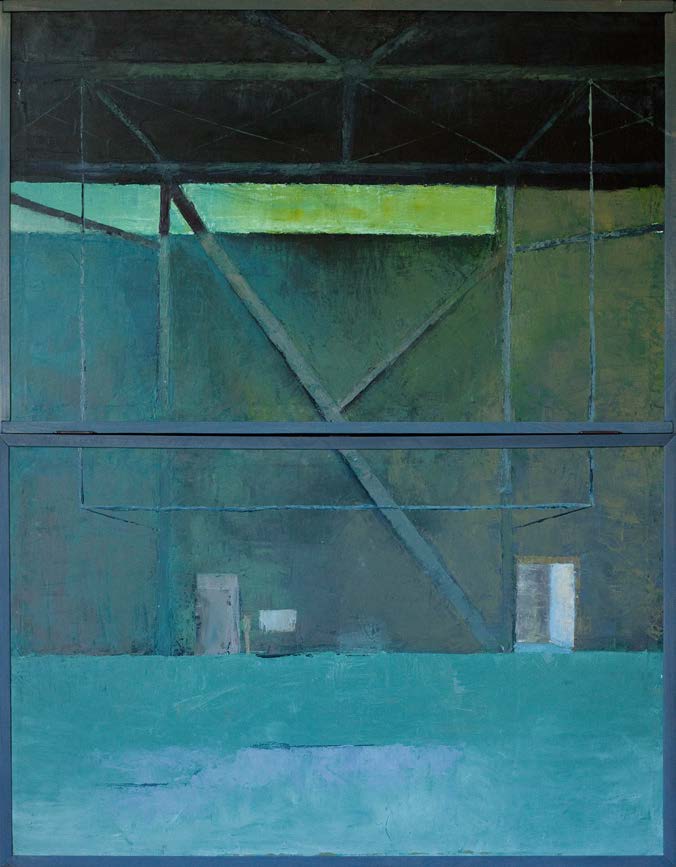
(photo credit: jer nelson)

(photo credit: jer nelson)
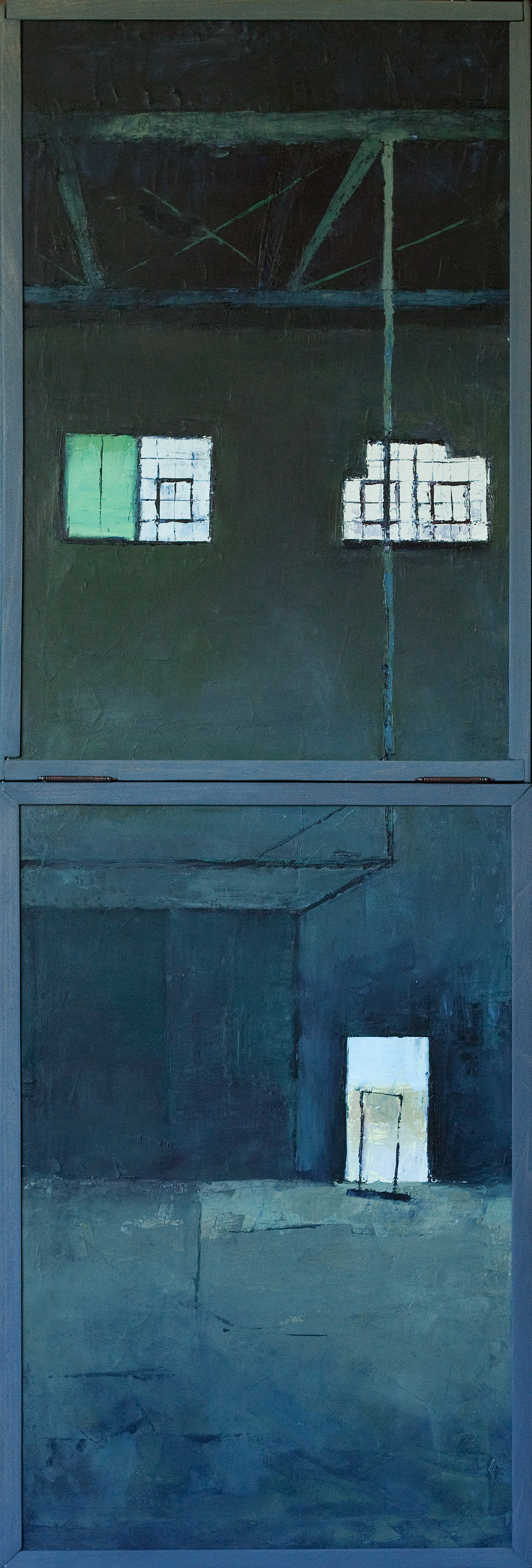
(photo credit: jer nelson)
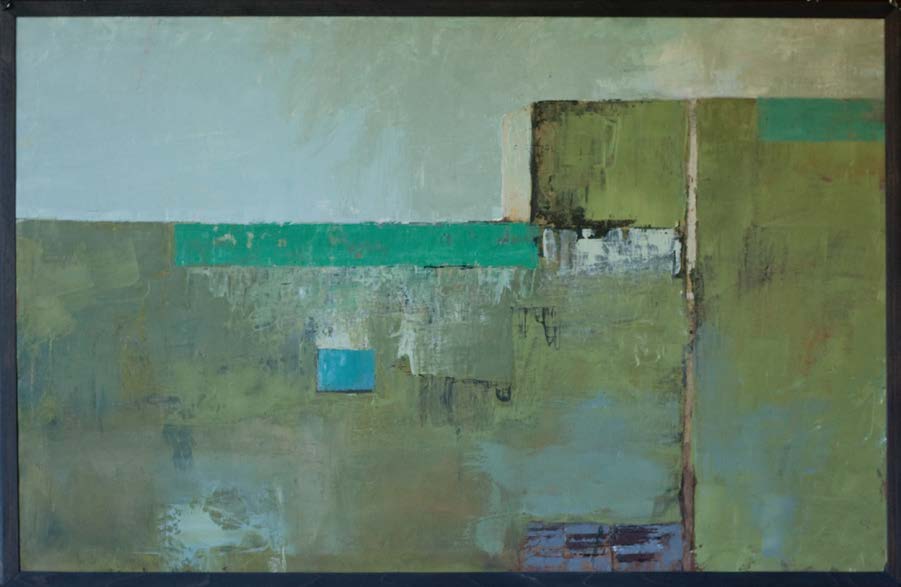
(photo credit: jer nelson)

(photo credit: jer nelson)
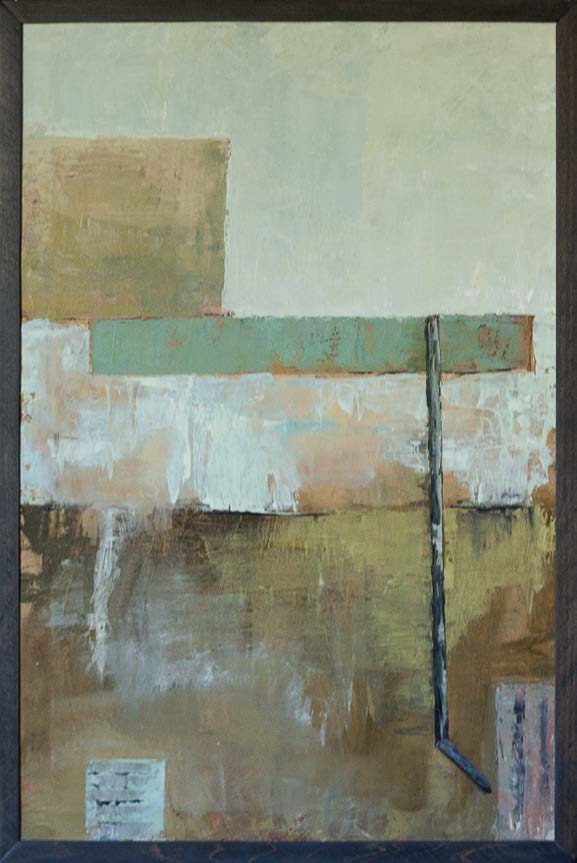
(photo credit: jer nelson)
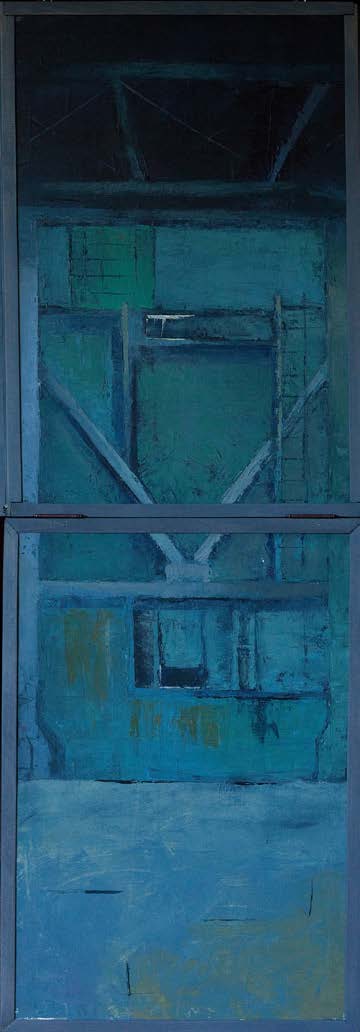
(photo credit: jer nelson)

Delco Remy was the largest factory in my hometown of Anderson, IN. It employed over 20,000 people in its heydey, and its loss has left a large void in the community.
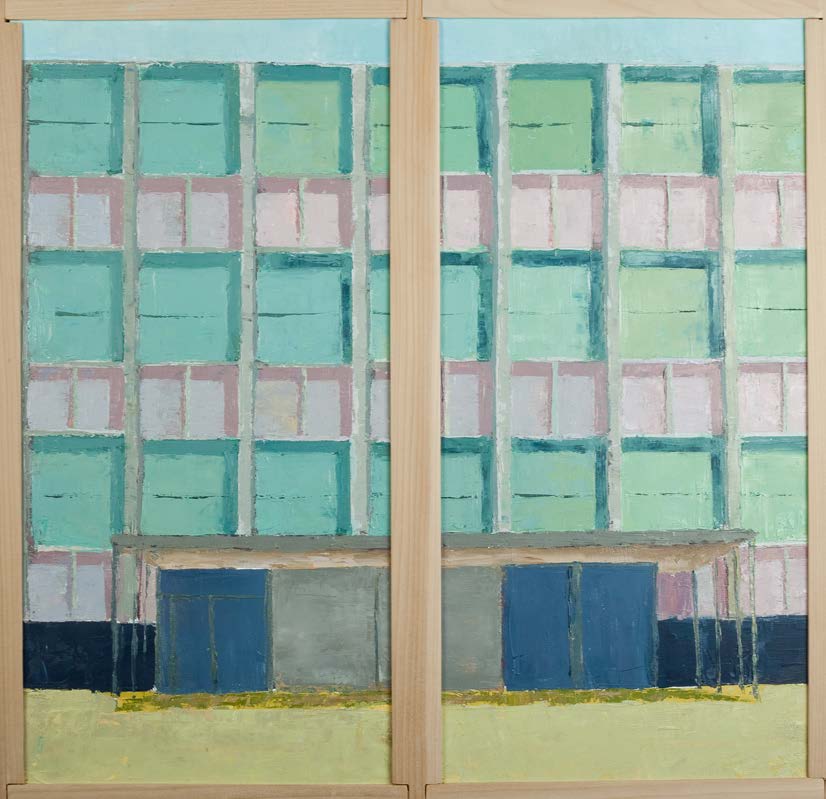
(photo credit: jer nelson)
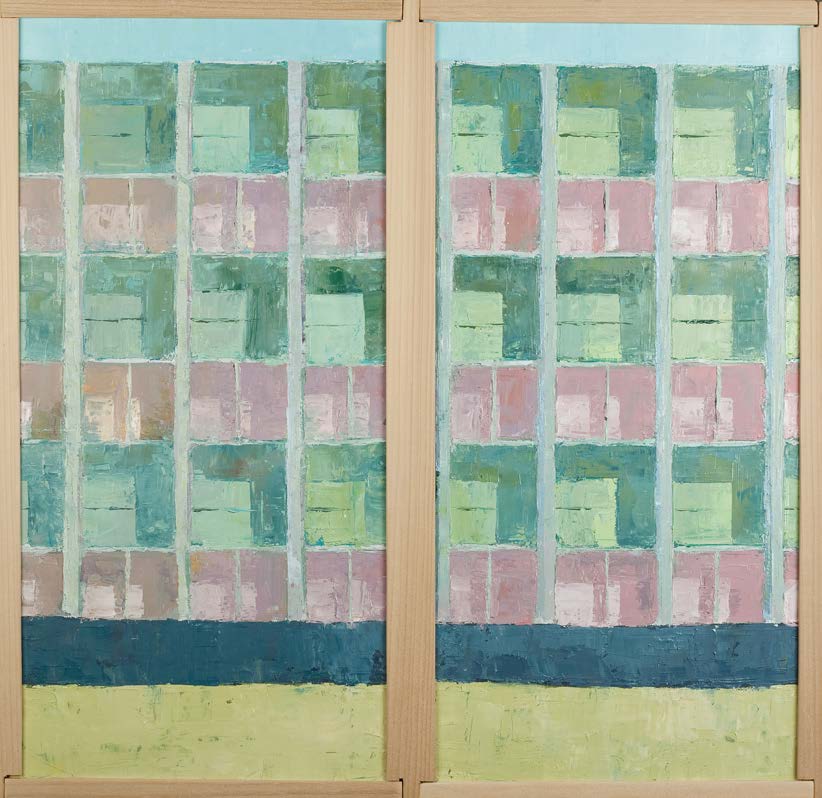
(photo credit: jer nelson)























